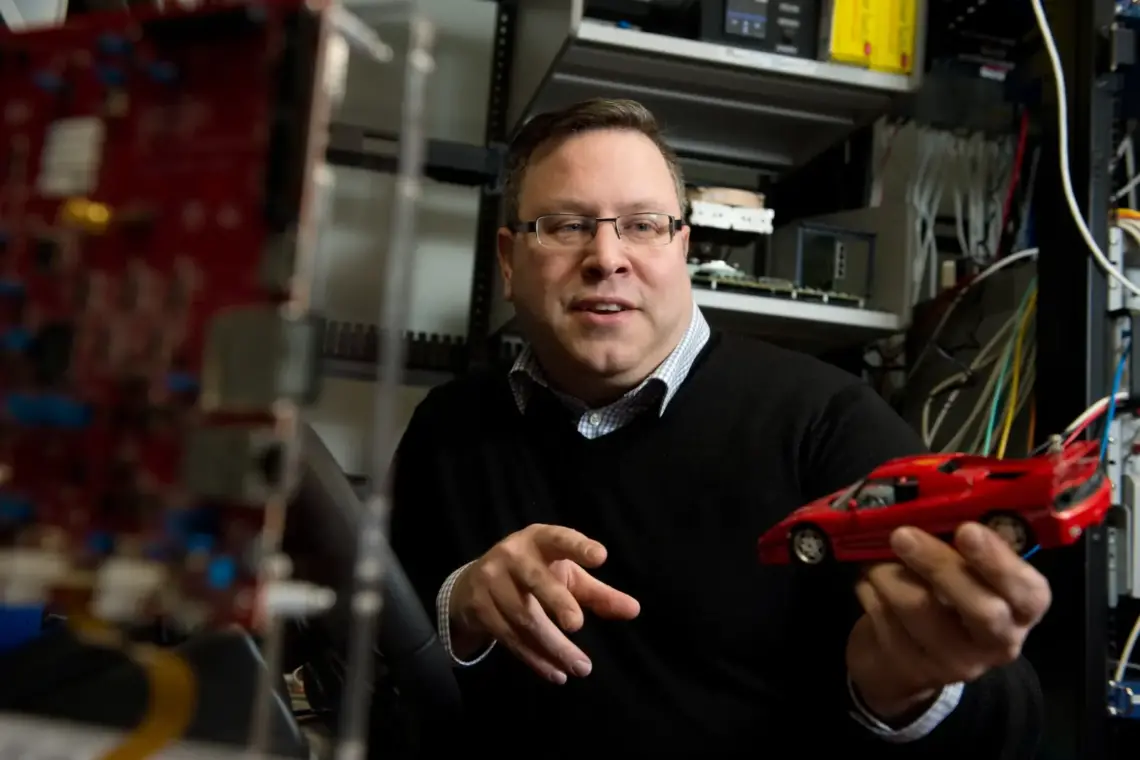
For Ali Osman Ors, it just makes sense for Kanata North to be a hub of innovation for autonomous vehicles. The area’s high-tech pedigree, after all, fits right in with the convergence of technologies necessary to put a self-driving car in every driveway.
Not to mention the fact that any autonomous vehicle that can reliably navigate Ottawa’s winter roads can pretty much succeed anywhere.
“I’m a true believer that machines will make better decisions under almost any conditions than a human driver … roads will be safer, we’ll be saving lives and reducing the number of injuries related to automobile accidents,” he says.
Silicon backbone
Ors is the R&D director for driver assistance (ADAS) and autonomous vehicles at NXP Semiconductor.
What is NXP Semiconductor? It’s a multinational technology company with 31,000 employees around the world and revenues of US$9.5 billion in 2016.
The company may not be a household name in Ottawa, but the local team of about 60 is on the cutting edge of autonomous vehicle technology.
While Blackberry QNX and Ford Motor Co. get most of the headlines for their local investments in the software for autonomous vehicle development, it’s the Ottawa NXP team that is providing the silicon backbone on which that software operates.
NXP’s local operation focuses on two key areas. The first is software and silicon IP development for dataplane processing, to make computing and telecommunications networks operate faster and more reliably. This part of the operation dates back decades in the area.
The second is Ors’ wheelhouse – autonomous vehicle processor cores. This half of the business has been built from NXP’s acquisition of local company CogniVue (where Ors served as vice-president of engineering).
Ors’ team is working to take today’s prototype vehicles that bristle with sensor racks, vision systems, LIDAR “soup cans” and large computers in the trunk that leave them looking like the DeLorean from Back to the Future Part III and turn them into something suitable for a dealer’s showroom.
It’s a big challenge – make the technology all but invisible in a physical sense while at the same time ensuring it is secure, reliable and roadworthy for the expected life of a vehicle. Enterprise-grade computer servers that once filled a trunk are being reduced to the size of a golf ball.
“What we are trying to do is get to something that can be deployed into any car, not just premium cars in limited geographical areas,” Ors says. “It’s about making the artificial intelligence cost-effective and embeddable into any level of car within any brand.”
Kanata ecosystem
Where does NXP’s work in dataplane processing figure into this?
Autonomous vehicles don’t exist in a silo. These are connected Internet of Things devices. They are part of a system that includes adding intelligence to roads, signage and traffic signals with sensors and wireless connectivity so infrastructure can communicate with the vehicle and vice-versa.
The car must also have a persistent wireless connection with a home base for regular updates to its firmware, and to troubleshoot how to handle new and unexpected situations – like someone driving down the road with a ladder sticking out of their trunk.
This makes fast and reliable network communications essential to mass adoption.
Ors expects that autonomous vehicles will still be at a prototype stage five years from now, but in 10 years we might very well see the technology go mainstream.
“Automotive used to be a laggard with new technology, but now bleeding-edge tech is getting incorporated into new vehicle designs at almost the same pace as advancements in mobile technology,” he says. “Without the silicon we provide, none of this would be possible.”
And Kanata North is a natural birthplace for this paradigm shift in our love affair with the automobile, from both a hardware side with NXP, and from the software side with partners such as Blackberry QNX and Ford.
“It really is about the talent and the resources,” Mr Ors says. “This is where we should be. You look out the window and see a lot of buildings with high-tech names on them – it’s an automatic ecosystem.”
